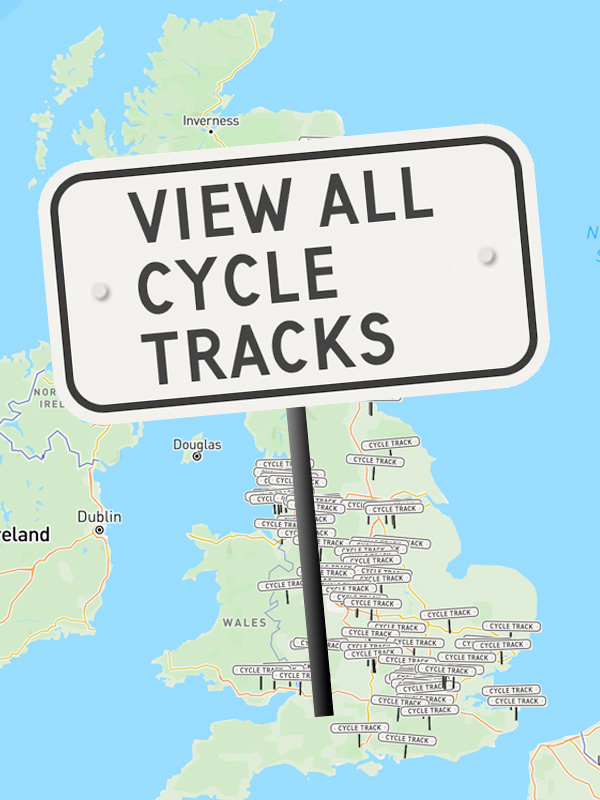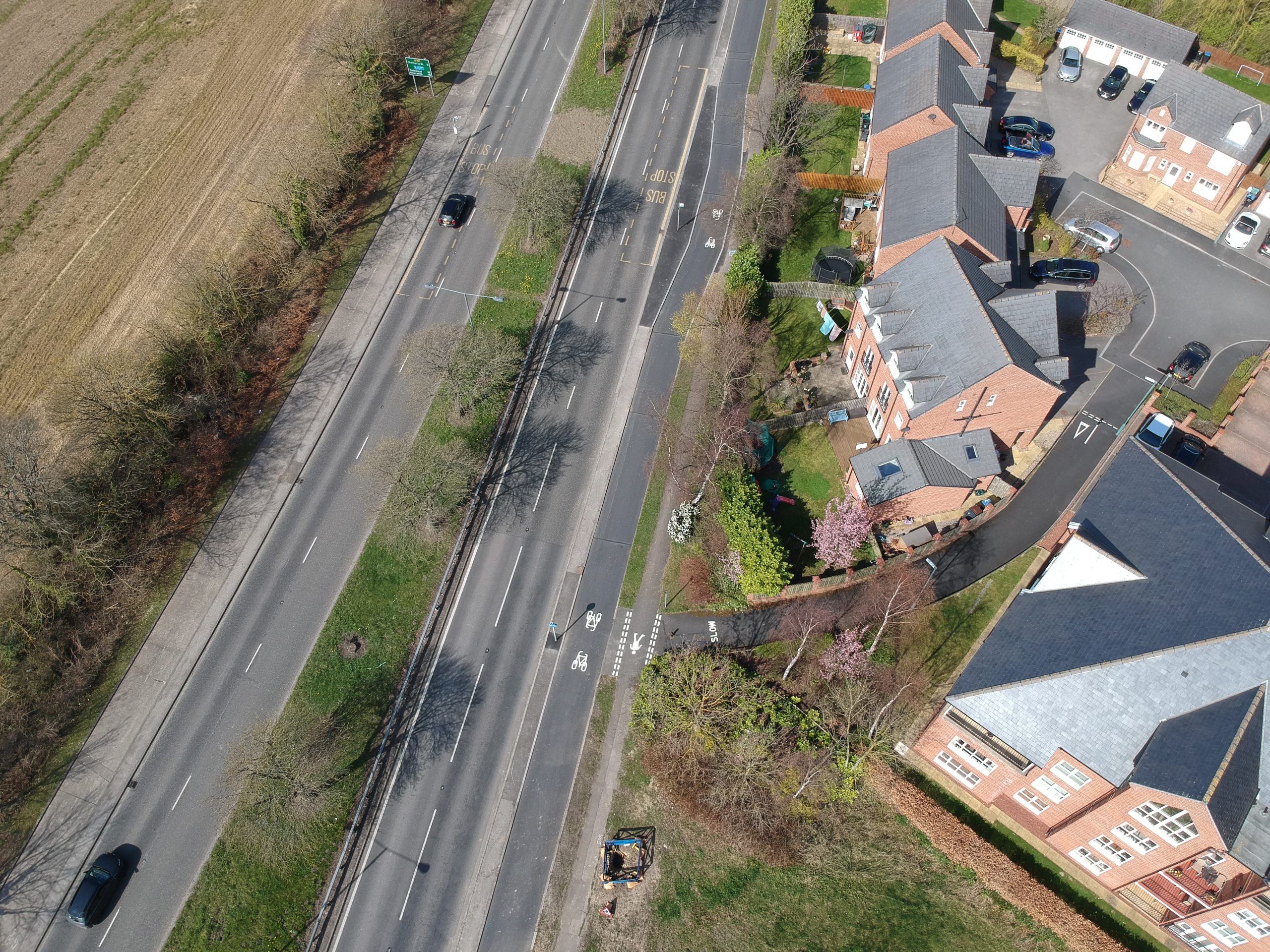
Cycle track on west side of road is unaltered from 1938; cycle track on east side of the road has been resurfaced as part of Great North Cycleway.
“A section of 1,063 yards of the Al road in Durham county, near Farewell Hall, is to be reconstructed with twin carriageways and 9ft. cycle paths,” reported The Cyclist in November 1936.
In fact, work on the “Farewell Hall–Mount Oswald Lane Trunk Road Scheme” had already started by February of that year. The go-ahead had been given in the previous year.
“This year, ordinary cycles have more than doubled in number the figures recorded two years ago,” stated Durham’s county surveyor W.M.J. Merrett in 1935, reminding the county council’s highway committee of the “recent circular of the Ministry of Transport regarding the provision of cycle tracks along the main roads.”
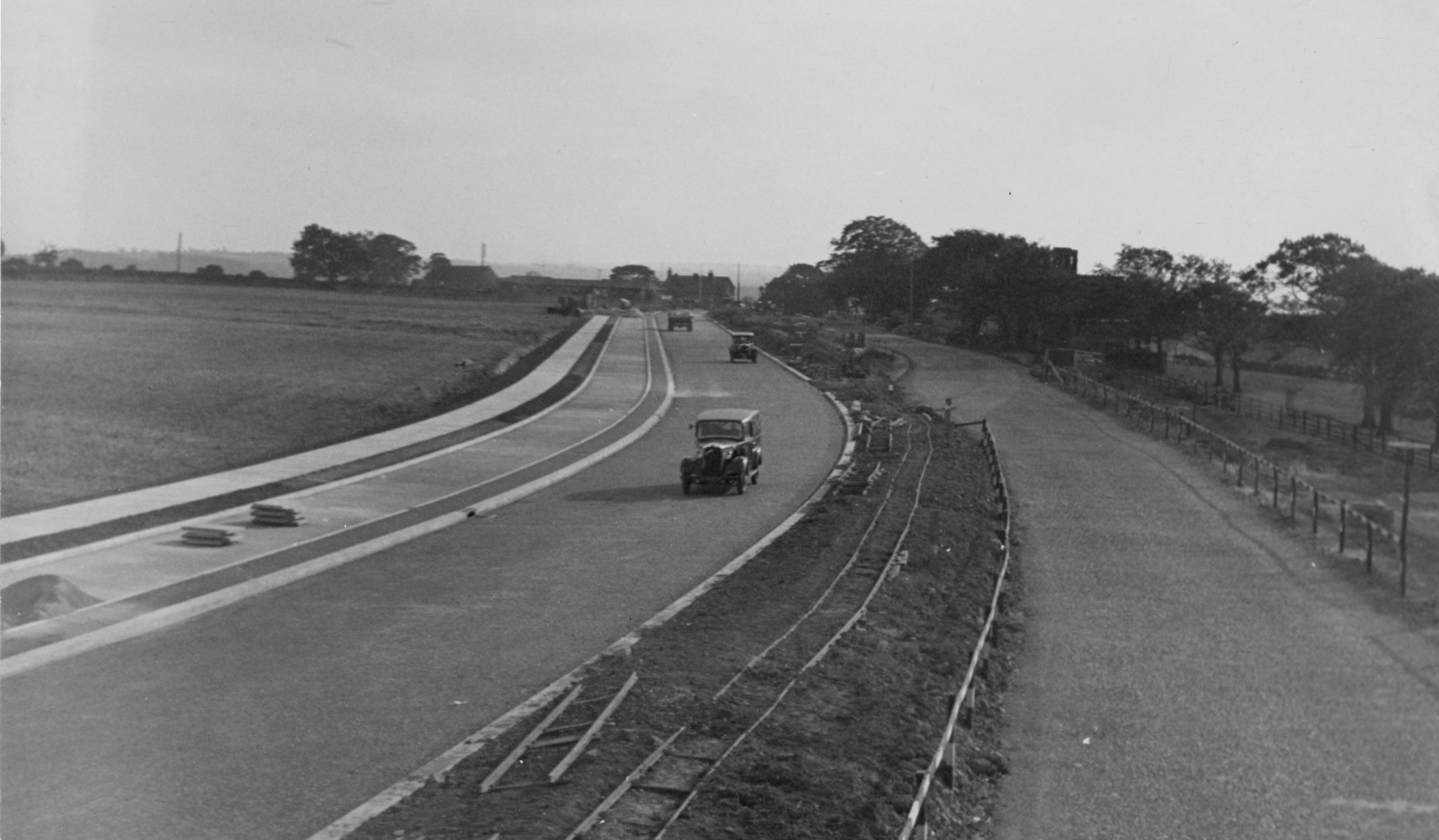
Construction of the “Farewell Hall trunk road scheme,” 1936. Credit: Durham County Council.
The highway committee nodded through the £40,673 project because the funds were to be provided from national coffers thanks to the signing over of major trunk roads to central government control from 1937 onwards.
“Works comprise reconstructing and widening to 120 feet between fences [and] provision of dual carriageways, cycle tracks and footways,” stated a 1936 report to the highways committee. There was also to be “construction of a traffic roundabout at the Farewell Hall end.”
The dual carriageway — part of the A1, Great North Road at that time — was finished on 30 June 1938. The kerb-separated cycle tracks were capped with concrete; the adjoining road was surfaced with asphalt, laid by Constable, Hart and Company Ltd of London.
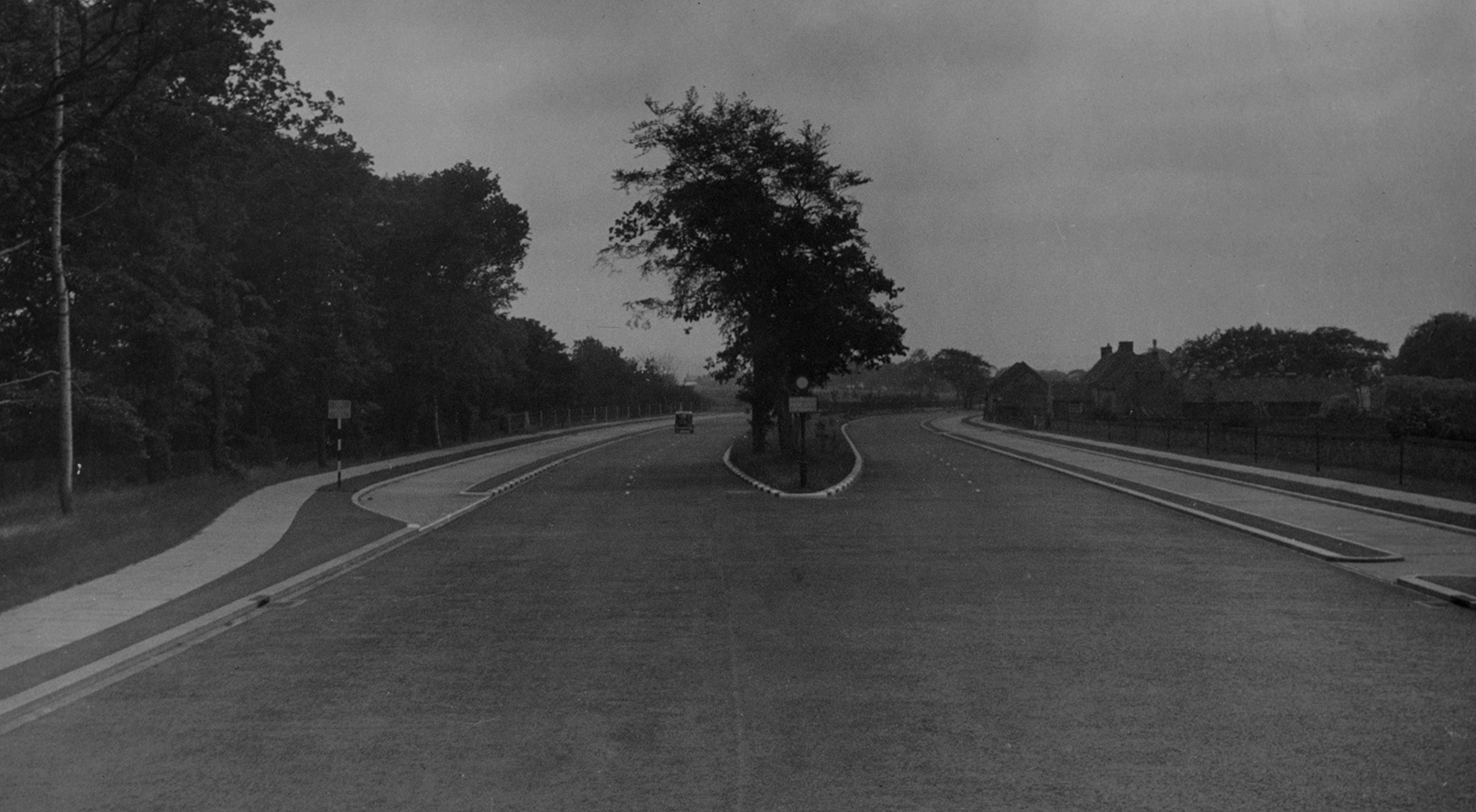
Completed cycle tracks beside the A1 Great North Road at Neville’s Cross, 1938. Sign on the left says “Cyclists Only.” Credit: Durham County Council.
Tree and hedge planting — by Messrs Thomas Matheson & Son of Morpeth — was completed on 9 March 1939, but it’s likely the road had already been in use for six months or more by then, with the dual carriageway ending at the period roundabout in front of the landmark Cock o’ The North hotel, a purpose-built service station named for the most powerful steam engine built in the UK to work a passenger line and which came into service in 1934.
A period photograph in the Durham County Council archives shows the empty, finished road and, on the left, the entrance to the northwards cycle track.
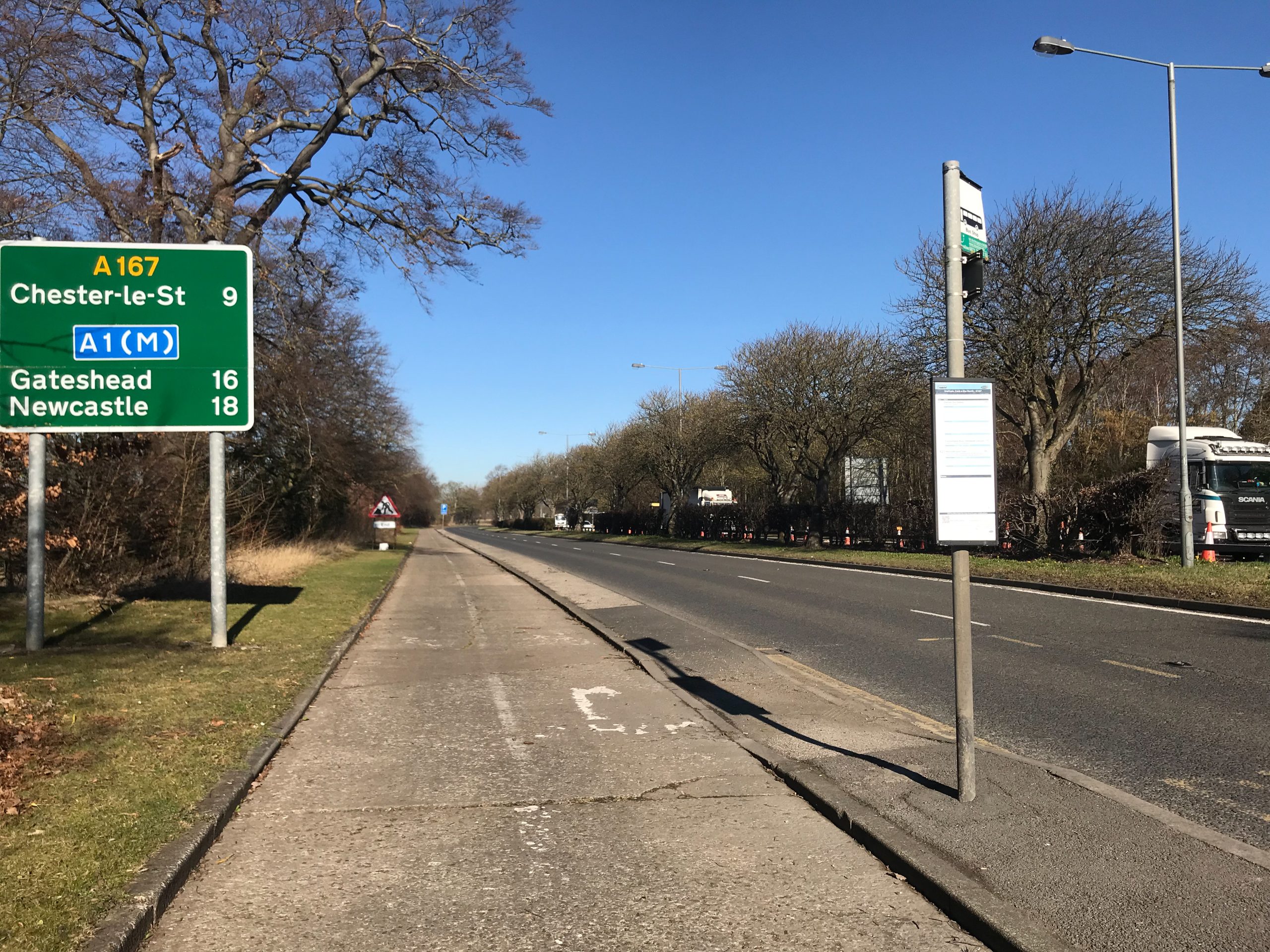
Period concrete on the cycle track on the west side of the A167. The footway has been lost so the cycle track was made into a shared use path.
Fast forward to today and — when no traffic is present — the scene is little changed. However, the entrance to the cycle track has been truncated for it’s now a renovated two-way track, a section of the planned 76-km-long Great North Cycleway. And, just like the adjoining road, it has been surfaced with asphalt.
Meanwhile, the Dutch-style cycle track on the opposite side of the road still has its original concrete surface.
The northwards track was resurfaced on 26 January 2019 with Milepave, a grouted asphalt from construction company Miles Macadam, and officially opened on 29 March of that year. With its smooth black asphalt and cycle track/footway roundels the track — now a shared-use cycleway and footway — looks modern.
The cycle track on the other side of the road remains preserved in aspic, little changed from when it was opened in 1938.
When it was built, the A1 cycle track at Neville’s Cross was somewhat of a white elephant – it didn’t link with much useful for cyclists and was therefore little used. Now, however, the site of the Cock o’ The North hotel — demolished in 2005 — has become an expanding, upmarket housing estate, and the protected cycleway has a much better chance of being well used.






